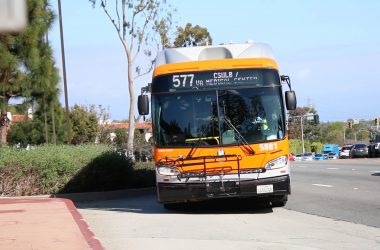As Cal State Long Beach enters the third phase of the accreditation process, campus liaisons for the Western Association of Schools and Colleges are working hard to finish the Educational Effectiveness Review.
The EER is the last report the campus must submit to WASC, one of six nongovernmental organizations that accredit schools in the U.S., before the university can be re-accredited.
According to CSULB’s WASC Web page, the report is meant to demonstrate that CSULB is committed to educational effectiveness and provides students with appropriate educational goals. WASC must also review if the instruction provided will result in students reaching levels of performance that are appropriate for the degrees they are given.
The accreditation process allows the university to maintain certain educational standards through a review process by an external organization. Educational institutions in the United States are not required to seek accreditation; however, most do because accreditation comes with many benefits.
“WASC accreditation provides a measure of quality assurance,” said Barbara Wright, WASC staff liaison to CSULB. “In addition, only regionally accredited institutions are eligible for federal funds to cover — among other things — students’ financial aid.”
David Hood, a history professor and accreditation liaison officer for CSULB, also commented on the benefits of accreditation.
“Accreditation is the process of institutional introspection in which we hold up a mirror to ourselves, admire our successes, acknowledge our weaknesses and improve our performance,” Hood said. “Socrates said that the unexamined life was not worth living. Similarly, the unaccredited institution is not worth attending.”
The accreditation process has three stages. The WASC steering committee submitted a proposal in 2006, which outlined the commitments it chose and the research that would be done for the next four years.
Once WASC accepted the proposal, the second phase, or the Capacity and Preparatory Review, began. According to Hood, this phase is designed to see if the university has enough money, faculty in the classrooms and books in the library.
The final phase is the EER, which is currently under development. The three core commitments have three research teams developing these areas of the report. Two of the three teams have submitted their drafts, and the third draft will arrive by the end of the week.
In its final report, CSULB will revisit the core commitments first outlined in the December 2008 Capacity and Preparatory Review. The review will report on the results of research that outlined three commitments.
The first core commitment is organizing for effectiveness, which will analyze the decision-making and communication process on issues such as enrollment and technology due to changes in the administration and Academic Senate system.
The second is staffing for effectiveness. CSULB will look at the staff in terms of workload, salary, diversity, opportunities for advancement and employee satisfaction.
The third is assessing student success, which will consider student retention and graduation rates by department, college and student subgroups. It will also look at how CSULB has addressed issues such as high failure-rate courses, the Graduation Writing Assessment Requirement and advising.
Two of these commitments were based on recommendations from the WASC commission’s 2002 action letter, which emphasized the need to address the assessment of student learning and shared governance within a highly decentralized institution.
The third commitment became a concern to CSULB as enrollment grew to 38,000, workloads were increased, budgets were cut and the cost of living grew. The university was worried these issues would make it difficult to recruit, retain and support highly qualified personnel.
President F. King Alexander said the campus has been working hard to improve on these commitments, especially staffing issues.
“Despite the severity of the budget crisis, we are in the process of putting together a future hiring plan that can help strengthen our campus diversity,” Alexander said in an e-mail.
He also said WASC requested a plan to handle the most recent budget cuts.
“I am working with the director of WASC to determine an appropriate time to present this plan since so much of our budget remains up in the air and out of our control,” Alexander said. “We will know a lot more in a month and a half. WASC understands this dilemma.”
Hood is helping oversee the final report, which must be submitted by summer 2010.
He said the drafts will be circulated to the campus next spring for comments and suggestions.
After the campus comments are received, the WASC Self-Study Steering Committee — CSULB faculty and administration who manage the WASC process, budget and reports — will examine and approve the report, which will then be sent to the president for final approval.
WASC will receive the report in the summer, and a new team will arrive in early October to assess the report.
The last time CSULB was re-accredited was in 2002, followed by self-study activities designed to prepare for an EER in October 2010.
Other WASC-accredited colleges include UCLA, University of Southern California and Cal State Fullerton.



